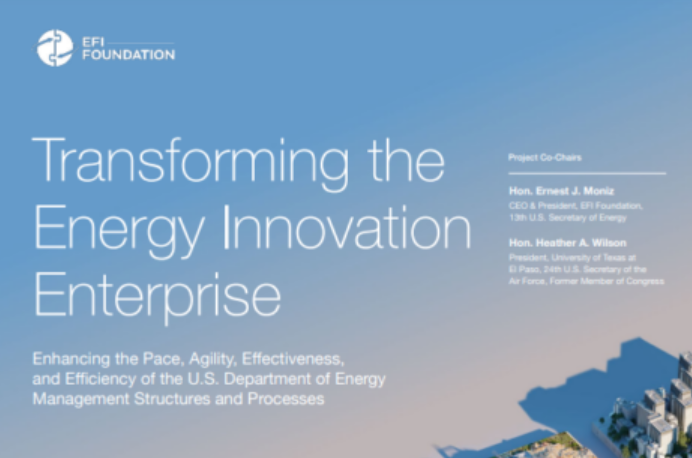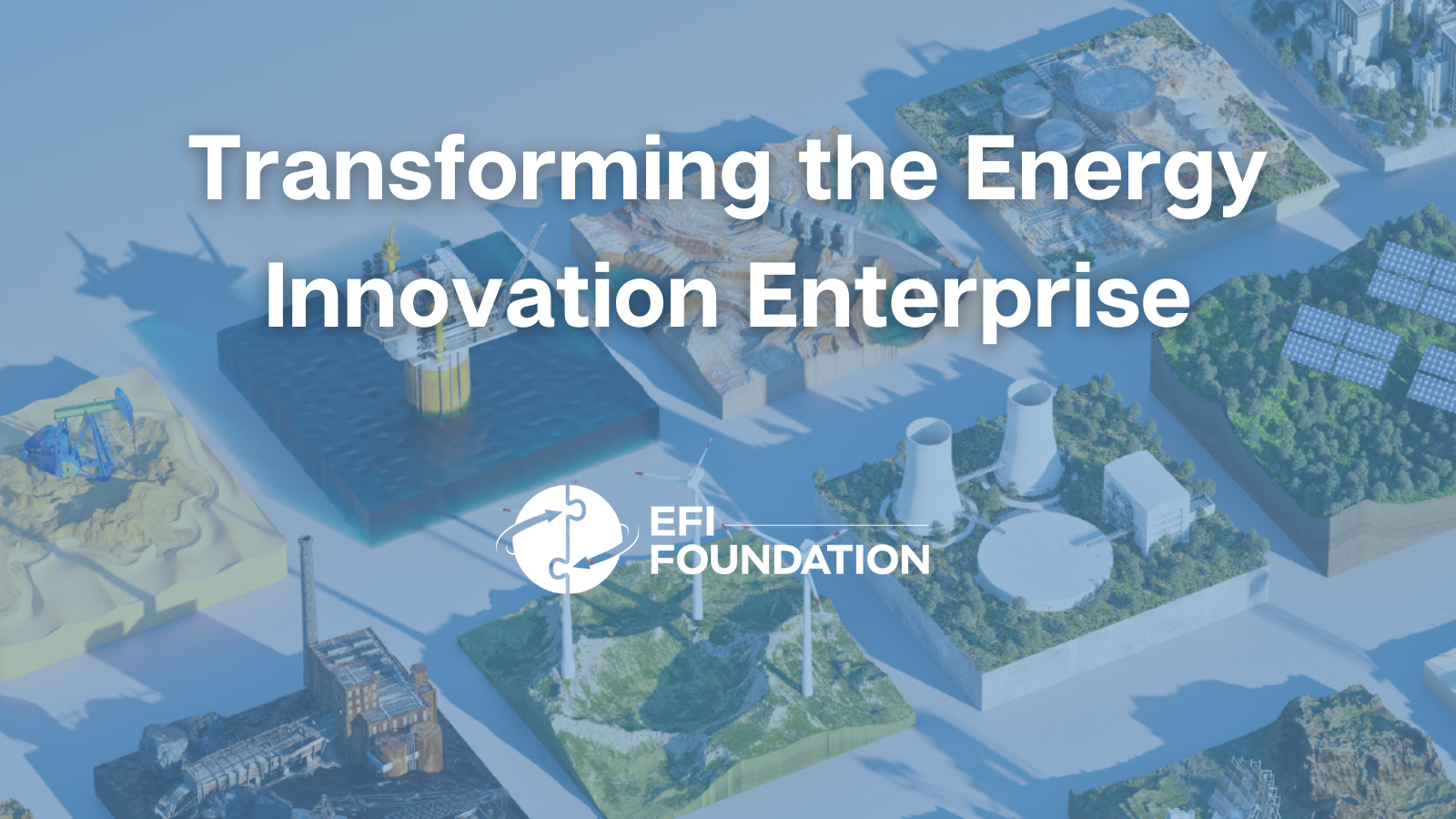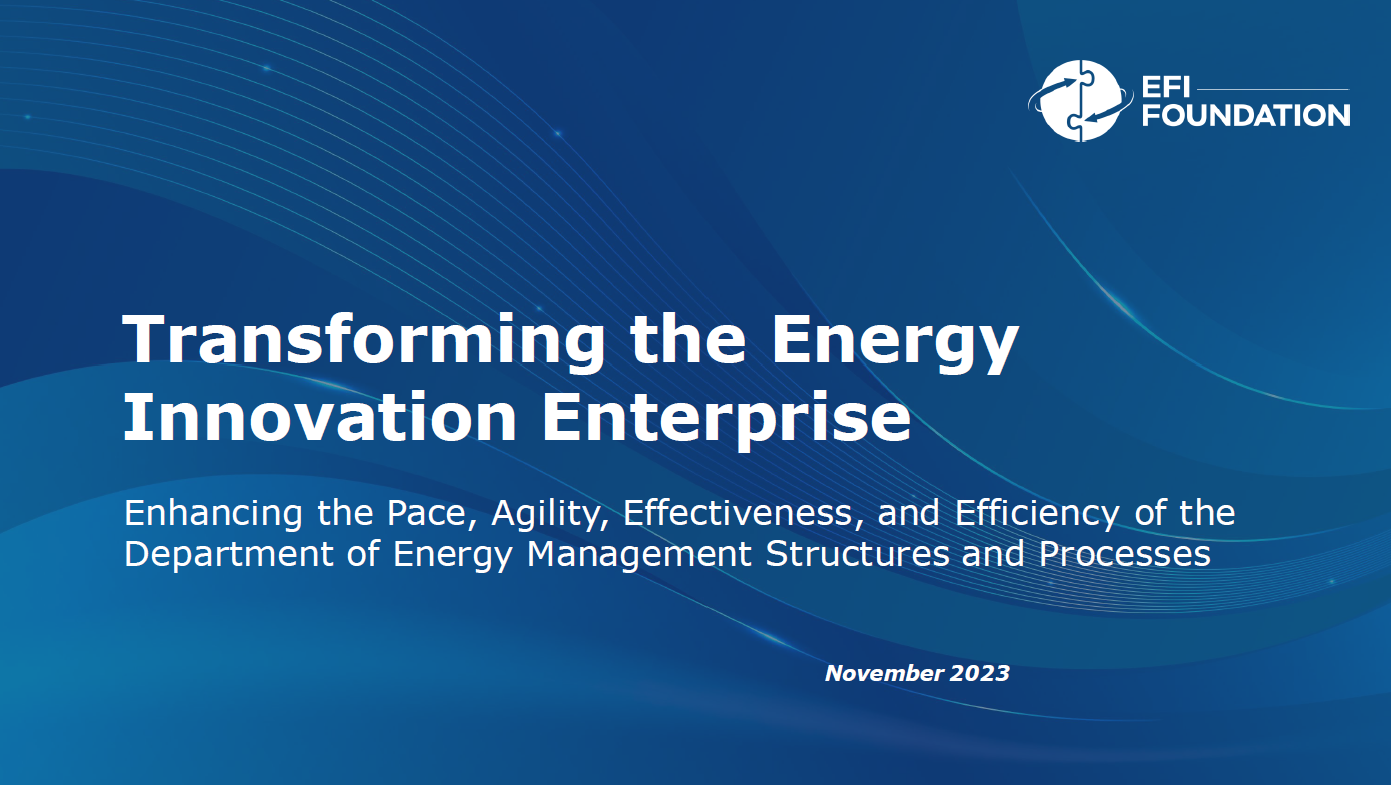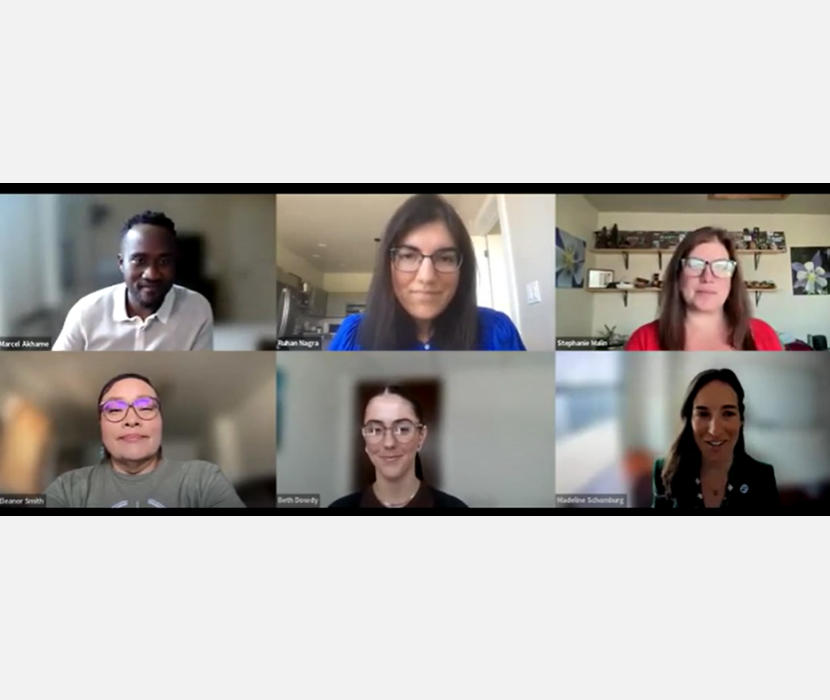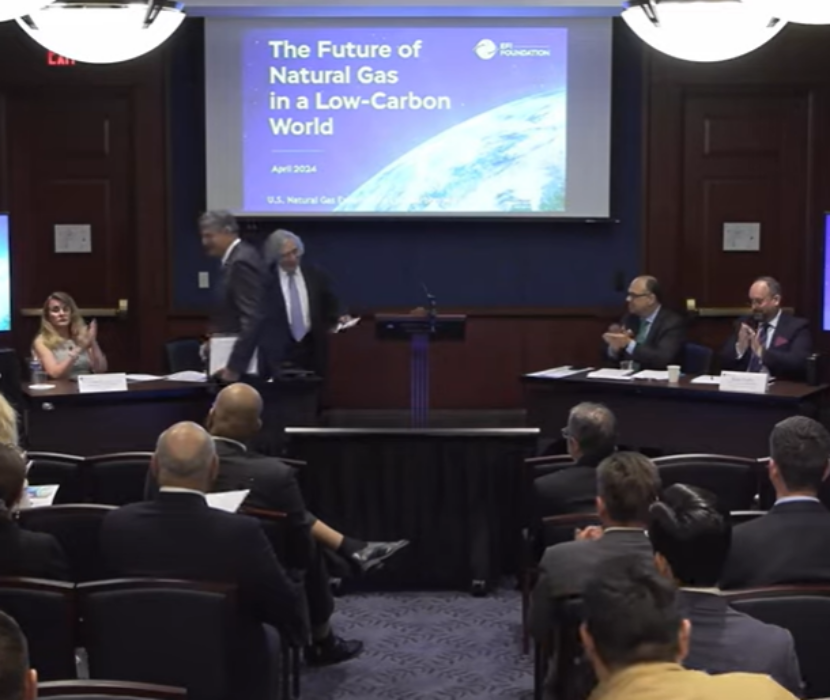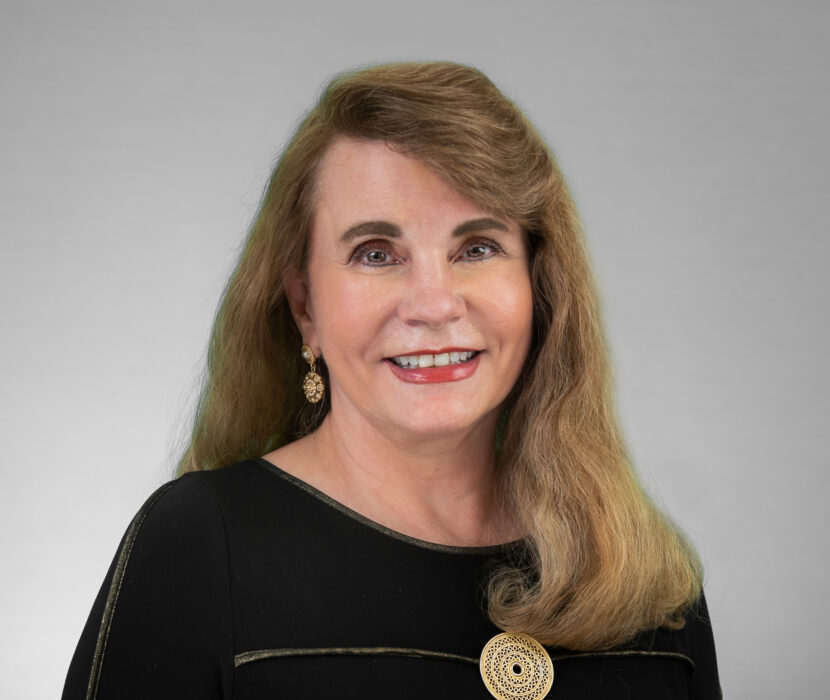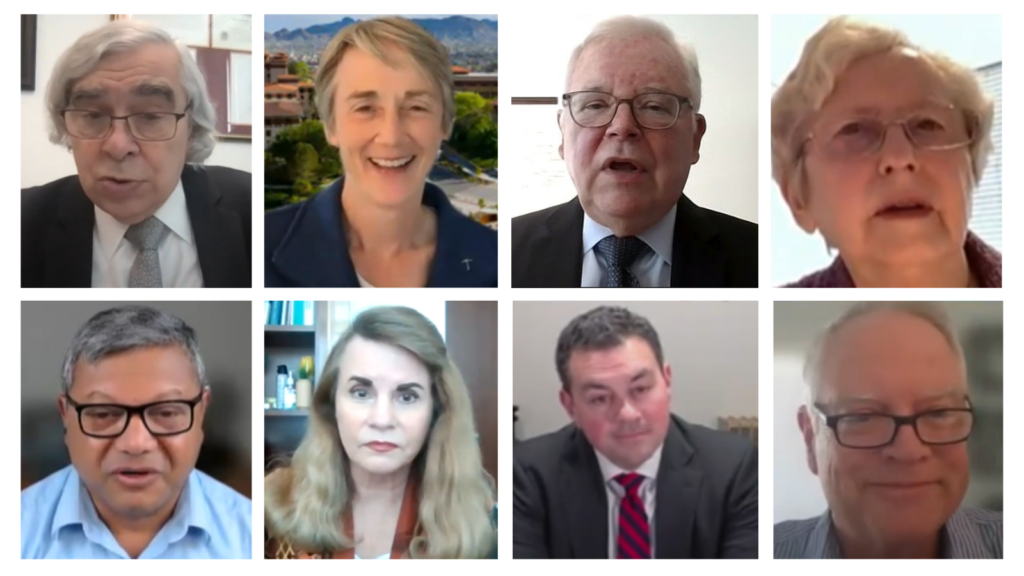
The United States needs rapid innovation in the next decade, and the U.S. Department of Energy (DOE) can play a vital role.
On November 8, 2023, the EFI Foundation shared opportunities to accelerate DOE’s role in energy innovation with a new report and virtual event. Both focused on opportunities to enhance DOE’s organizational structure and its internal processes to help accelerate the energy innovation process.
The event featured introductory remarks from former energy secretary and EFI Foundation CEO Ernest Moniz and former member of Congress and The University of Texas at El Paso President Heather Wilson. EFI Foundation Executive Vice President Joe Hezir then provided an overview of the report’s five recommendations, which include ways to improve both the beginning and end stages of the innovation process, foster internal coordination, and create a strategic plan to guide DOE’s future trajectory.
During a panel discussion moderated by Bill Loveless, host of Columbia University’s podcast Columbia Energy Exchange, former government officials, academics, and think tank experts discussed how these recommendations could make DOE’s innovation process quicker and more effective.
In the last few years, Congress has passed five pieces of legislation to fund the clean energy transition—the Energy Act of 2020, the Bipartisan Infrastructure Law (BIL), the CHIPS and Science Act, the Inflation Reduction Act (IRA), and the Fiscal 2023 Consolidated Appropriations Act. Hezir said that this funding will amount to around $900 billion in tax credit spending or loan authority in the next 5 to 10 years.
However, Congress did not provide a spending framework, leaving implementation to DOE. Moniz explained that DOE’s ability to create a successful implementation framework will be vital to achieving rapid, meaningful innovation.
“The DOE challenge is to take these significant resources put into law and integrate them into their utilization across that entire innovation chain,” Moniz said.
Supporting the National Laboratories
DOE has 17 national laboratories, which examine research and development questions to “translate basic science into innovation.” Several speakers discussed how the national laboratories would play a critical role in accelerating the innovation process.
The University of Texas at El Paso President Heather Wilson said that DOE’s laboratory directed research and development (LDRD) model could offer a good starting point for allowing the national laboratories to be leaders in innovation. This model creates flexibility for national laboratories to choose what they research and take on high-risk research that could potentially have value for national programs. However, she said that “a lab-directed technology maturation program” would help DOE continue to grow in this area.
“[The program] can’t be at the expense of laboratory-directed research and development,” Wilson said. “It has to be controlled at the lab level so that you’re more likely to get things that actually work, rather than deciding this in some bureaucracy in Washington.”
Arun Majumdar, dean of Stanford University’s Doerr School of Sustainability, pointed out that reducing the amount of coordination that the national laboratories are required to do with DOE headquarters would allow them to move quicker and work better with businesses.
“You need the engagement of the private sector,” Majumdar said. “I think it’s very important to have the mechanisms … to enable the labs to move at the speed of business.”
Enhancing Coordination
EFI Foundation Vice President Joe Hezir explained how DOE needs to enhance its ability to coordinate across its many crosscutting offices and activities.
“We identified 11 areas of technology where DOE is currently doing crosscuts, and we’re not sure we captured all of them,” Hezir said.
EFI Executive Vice President Melanie Kenderdine—who was energy counselor to the secretary under Moniz—said that the challenges of communication within DOE and between other federal agencies were similar. During her tenure, DOE—with input from 22 other agencies—wrote two reports that synthesized large amounts of information about technology innovation and the clean energy transition: the Quadrennial Energy Review and the Quadrennial Technology Review.
“It just goes to show you it’s very important—cross-cutting internal coordination, but also external inter-agency coordination,” Kenderdine said.
Learning from Failures
Speakers discussed how DOE will periodically need to pursue research that fails so that researchers can identify the best technologies to power the clean energy transition. If DOE learns from these failures, Congress may be willing to give it more money in the future.
Former Vice President of the National Academy of Engineering Maxine Savitz said that DOE should use metrics more to show how its failures contribute to later successes.
“I think [metrics] are very important,” Savitz said. “DOE needs to really consider doing outcome metrics for its programs and build them in from the beginning.”
ClearPath CEO Rich Powell said that the more DOE projects that are successful, the more confident Congress will be in appropriating DOE funding.
“The way to get folks accepting the deal we should take risks is by showing that it actually succeeds in commercializing groundbreaking new technologies,” Powell said. “If we keep that pipeline going across all the different technology classes, we’re going to have a political class that’s willing to take the risks on DOE.”
– Georgia Lyon, Communications Associate
Supplemental Material
(Share this post with others.)


